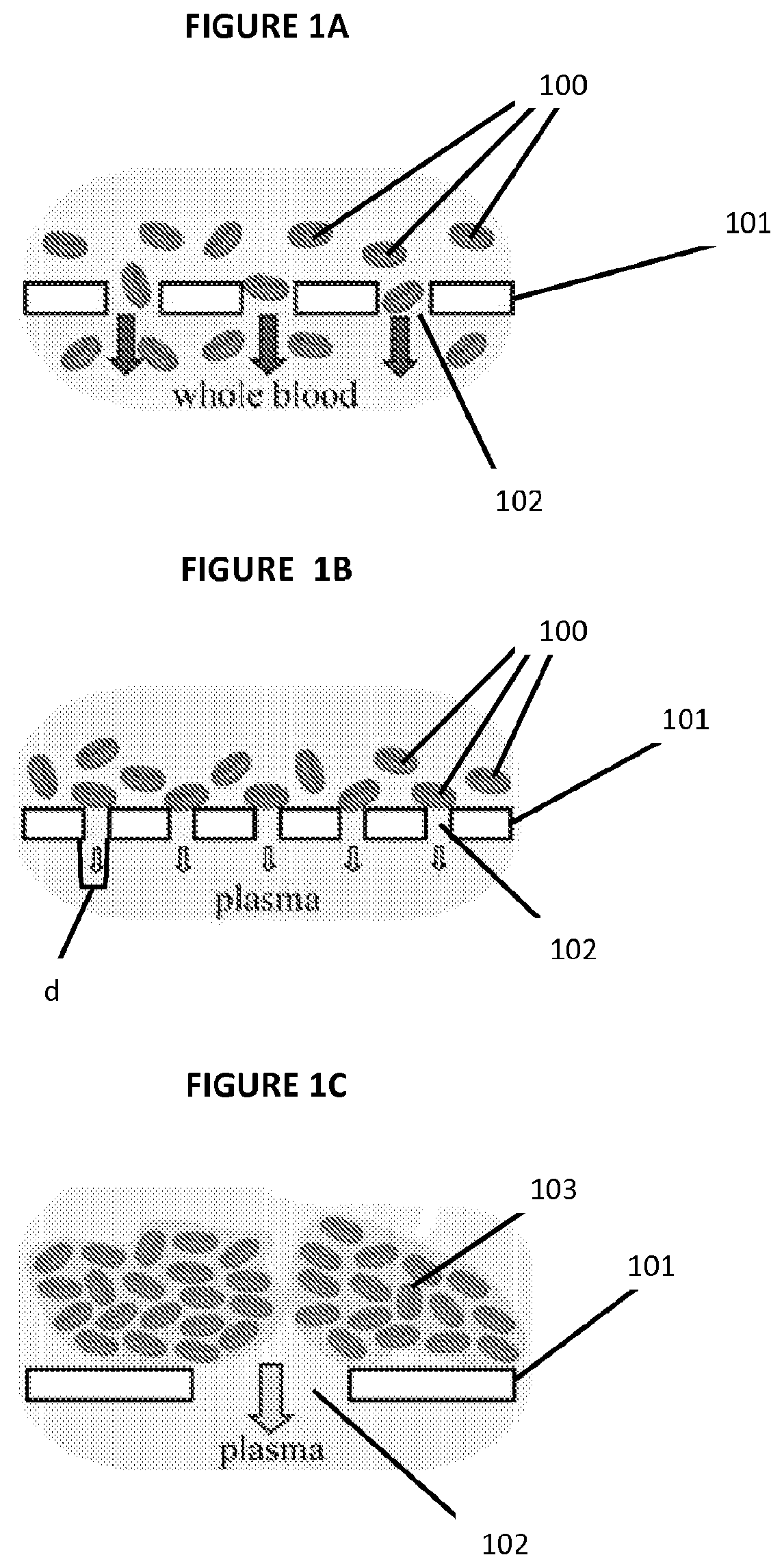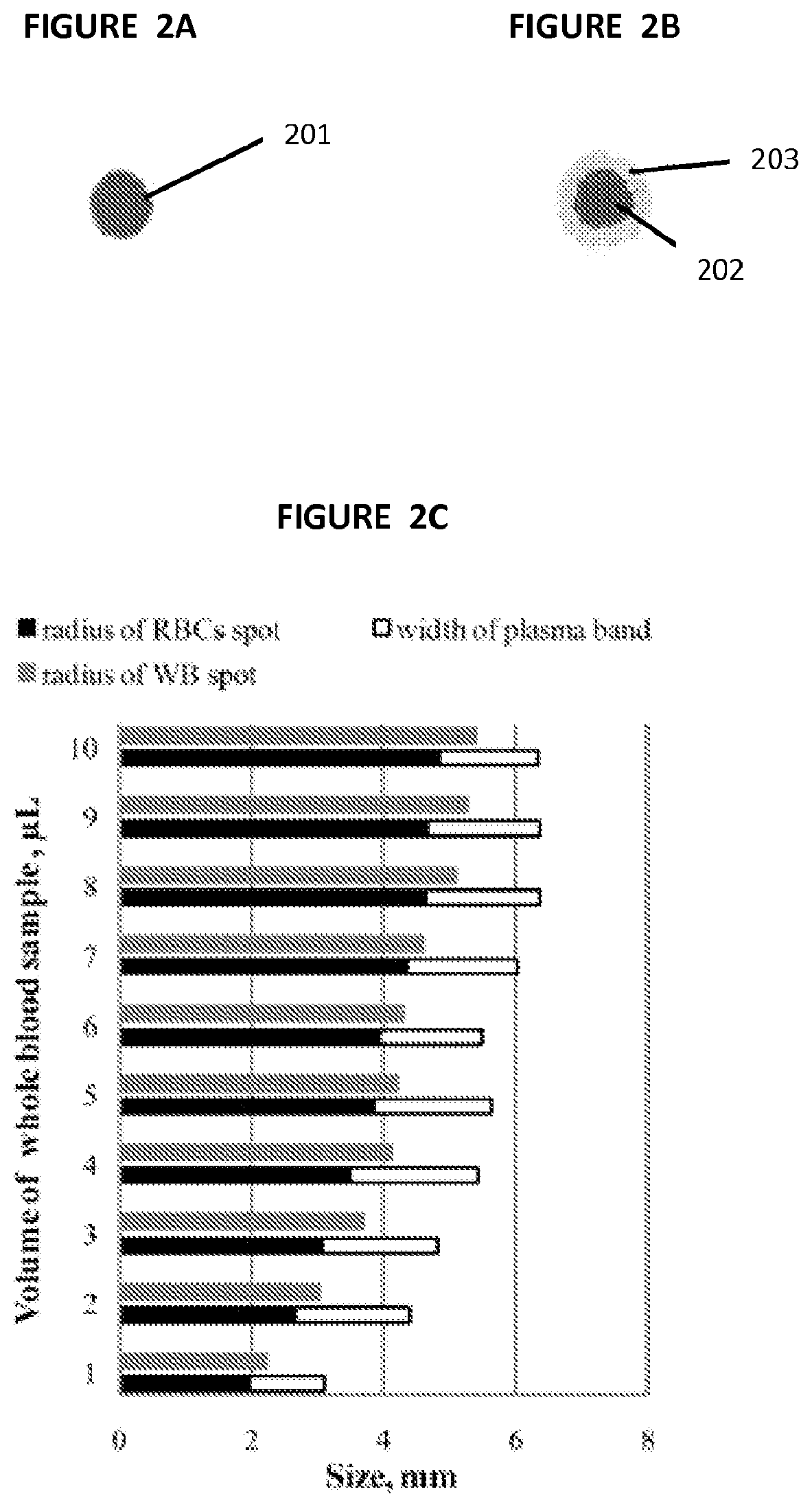Paper based diagnostic test
a diagnostic test and paper-based technology, applied in the field of paper-based diagnostic tests, can solve the problems of large and expensive laboratory instruments, difficult implementation of most current diagnostic assays, and large volume of biological samples
- Summary
- Abstract
- Description
- Claims
- Application Information
AI Technical Summary
Benefits of technology
Problems solved by technology
Method used
Image
Examples
example 1
Determination of Plasma Glucose Concentration in Whole Blood Samples
[0057]A μPAD with RBC agglutination-based plasma separation was tested using an assay for plasma glucose as an example. In this assay, glucose oxidase catalyzes oxidation of glucose present in the sample of plasma to yield hydrogen peroxide (H2O2). Horseradish peroxidase then catalyzes the reaction of H2O2 with potassium iodide, which results in brown color. The intensity of the color change is proportional to the amount of H2O2 produced, and thus to the amount of glucose.
[0058]To calibrate the sensitivity of the colorimetric assay to plasma glucose, 3.5 μL of plasma with different known concentrations of glucose was spotted onto square-patterned regions of chromatography paper (the same paper used to fabricate the μPADs and with observed pores of approximately 2-200 μm in diameter) that were pre-treated with the reagents of the assay. The plasma was prepared by centrifugation (800×g, 15 minutes) of whole blood samp...
example 2
Classification of Blood Samples as Healthy, SCT or SCD
[0075]The μPAD of the present invention was used on one normal (Hb AA), one SCT (Hb AS) and one SCD (Hb SS) blood sample as representative examples. We gently mixed a small volume, approximately 10-50 μL, of each sample of whole blood with the SickleDex solution at a 1:20 ratio by volume, waited 5 minutes and deposited a 20 μL droplet of each of the mixtures onto the center of a μPAD. Normal human venous blood (Hb AA)) was collected from healthy consenting volunteers; SCD (Hb SS) and SCT (Hb AS) blood samples were obtained at the Sickle Cell Center of Southern Louisiana (New Orleans, La.). Blood samples from SCD patients who received blood transfusion in the previous three months were excluded. The Hb A, F, C and S content of SCD samples was determined via hemoglobin electrophoresis as a part of standard patient care. SCT blood samples were collected from biological parents (usually mothers) of SCD patients. SCT samples with hema...
PUM
 Login to View More
Login to View More Abstract
Description
Claims
Application Information
 Login to View More
Login to View More - R&D Engineer
- R&D Manager
- IP Professional
- Industry Leading Data Capabilities
- Powerful AI technology
- Patent DNA Extraction
Browse by: Latest US Patents, China's latest patents, Technical Efficacy Thesaurus, Application Domain, Technology Topic, Popular Technical Reports.
© 2024 PatSnap. All rights reserved.Legal|Privacy policy|Modern Slavery Act Transparency Statement|Sitemap|About US| Contact US: help@patsnap.com










